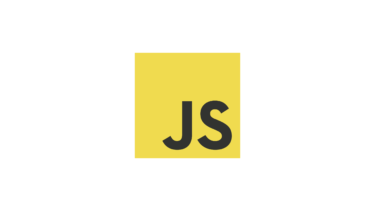今更感はありますが…備忘録としてまとめ。
タイトル通り、create-react-app コマンドと cordova のコマンドを使って、Cordova アプリの開発環境を作る方法です。
色々な記事がありましたが、個人的に一番良いと思ったのがこちらの Qiita の記事です。
Create React App & Cordovaでアプリをつくる環境を整える 2018年4月時点 – Qiita
https://qiita.com/bathtimefish/items/113154e89650b351b5b7
作成方法ですが、まずは create-react-app と cordova をインストールします。
npm install -g create-react-app npm install -g cordova
インストールが終わったら、任意の場所で下記のコマンドを実行します。
create-react-app [プロジェクト名] cd [プロジェクト名] npm run eject
こちらのコマンドを実行すると、Create React App プロジェクトが作成できます。
3行目のコマンドは、react-scripts をディレクトリに展開するとのことでしたが…よく分かりませんでした。
なお、こちらを実行すると、? Are you sure you want to eject? This action is permanent. (y/N) と聞かれるので、問題なければ y を入力します。
上記のコマンドが完了したら、config/paths.js を開きます。
こちらのファイルに、appBuild: resolveApp('build') という記述があるので、ここを appBuild: resolveApp('www') に変更します。
次に package.json を開き、"homepage": "./", を追加します。
追加する場所は、"dependencies": { …… }, のすぐ上あたりです。
上記が全て完了したら、一旦一つ上のディレクトリに戻り、下記コマンドで cordova の環境を作成します。
cordova create [ディレクトリ名] [Bundle identifier/アプリケーションID] [プロジェクト名]
なお、ディレクトリ名は create-react-app コマンドで指定したプロジェクト名とは異なるものを指定してください。
こちらを実行したら、このプロジェクト内の config.xml を、上で作成した Create React App プロジェクトのディレクトリの直下にコピーします。
public/index.html を開き、下記の 3行を head 内に追加します。
<meta http-equiv="Content-Security-Policy" content="default-src 'self' data: gap: https://ssl.gstatic.com 'unsafe-eval'; style-src 'self' 'unsafe-inline'; media-src *; img-src 'self' data: content:;"> <meta name="format-detection" content="telephone=no"> <meta name="msapplication-tap-highlight" content="no">
なお、1行目の meta http-equiv="Content-Security-Policy" は環境にあわせて適宜変更してください。
そして、同じく Create React App プロジェクト の src/index.js を下記のように修正します。
import React from 'react';
import ReactDOM from 'react-dom';
import './index.css';
import App from './App';
import registerServiceWorker from './registerServiceWorker';
const startApp = () => {
ReactDOM.render(<App />, document.getElementById('root'));
registerServiceWorker();
};
if(window.cordova) {
document.addEventListener('deviceready', startApp, false);
} else {
startApp();
}
なおこのままビルドすると、上記のコードにある registerServiceWorker.js がなくてエラーになるので、src ディレクトリ内に下記の内容で作成します。
// In production, we register a service worker to serve assets from local cache.
// This lets the app load faster on subsequent visits in production, and gives
// it offline capabilities. However, it also means that developers (and users)
// will only see deployed updates on the "N+1" visit to a page, since previously
// cached resources are updated in the background.
// To learn more about the benefits of this model, read https://goo.gl/KwvDNy.
// This link also includes instructions on opting out of this behavior.
const isLocalhost = Boolean(
window.location.hostname === 'localhost' ||
// [::1] is the IPv6 localhost address.
window.location.hostname === '[::1]' ||
// 127.0.0.1/8 is considered localhost for IPv4.
window.location.hostname.match(
/^127(?:\.(?:25[0-5]|2[0-4][0-9]|[01]?[0-9][0-9]?)){3}$/
)
);
export default function register() {
if (process.env.NODE_ENV === 'production' && 'serviceWorker' in navigator) {
// The URL constructor is available in all browsers that support SW.
const publicUrl = new URL(process.env.PUBLIC_URL, window.location);
if (publicUrl.origin !== window.location.origin) {
// Our service worker won't work if PUBLIC_URL is on a different origin
// from what our page is served on. This might happen if a CDN is used to
// serve assets; see https://github.com/facebookincubator/create-react-app/issues/2374
return;
}
window.addEventListener('load', () => {
const swUrl = `${process.env.PUBLIC_URL}/service-worker.js`;
if (isLocalhost) {
// This is running on localhost. Lets check if a service worker still exists or not.
checkValidServiceWorker(swUrl);
// Add some additional logging to localhost, pointing developers to the
// service worker/PWA documentation.
navigator.serviceWorker.ready.then(() => {
console.log(
'This web app is being served cache-first by a service ' +
'worker. To learn more, visit https://goo.gl/SC7cgQ'
);
});
} else {
// Is not local host. Just register service worker
registerValidSW(swUrl);
}
});
}
}
function registerValidSW(swUrl) {
navigator.serviceWorker
.register(swUrl)
.then(registration => {
registration.onupdatefound = () => {
const installingWorker = registration.installing;
installingWorker.onstatechange = () => {
if (installingWorker.state === 'installed') {
if (navigator.serviceWorker.controller) {
// At this point, the old content will have been purged and
// the fresh content will have been added to the cache.
// It's the perfect time to display a "New content is
// available; please refresh." message in your web app.
console.log('New content is available; please refresh.');
} else {
// At this point, everything has been precached.
// It's the perfect time to display a
// "Content is cached for offline use." message.
console.log('Content is cached for offline use.');
}
}
};
};
})
.catch(error => {
console.error('Error during service worker registration:', error);
});
}
function checkValidServiceWorker(swUrl) {
// Check if the service worker can be found. If it can't reload the page.
fetch(swUrl)
.then(response => {
// Ensure service worker exists, and that we really are getting a JS file.
if (
response.status === 404 ||
response.headers.get('content-type').indexOf('javascript') === -1
) {
// No service worker found. Probably a different app. Reload the page.
navigator.serviceWorker.ready.then(registration => {
registration.unregister().then(() => {
window.location.reload();
});
});
} else {
// Service worker found. Proceed as normal.
registerValidSW(swUrl);
}
})
.catch(() => {
console.log(
'No internet connection found. App is running in offline mode.'
);
});
}
export function unregister() {
if ('serviceWorker' in navigator) {
navigator.serviceWorker.ready.then(registration => {
registration.unregister();
});
}
}
作成が終わったら、Create React App プロジェクトのディレクトリに移動し、npm run build を実行します。
エラーが出なければビルド成功です!
あとは、任意のプラットフォームを、下記のコマンドを使って追加してください。
cordova platforms add browser cordova platforms add android cordova platforms add ios
もちろん全部追加しなくてもOKです。
あとは cordova のコマンドを使ってプロジェクトを実行してください。
下記のコマンドを実行すると、ブラウザで実行できます。
cordova run browser
以上、create-react-app コマンドを使って Cordova アプリの開発環境を作る方法でした。
ほぼ Qiita の参考記事そのままなので、こちらを参考にして頂いても大丈夫です。





